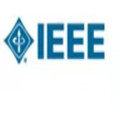Trajectory prediction aims at forecasting agents' possible future locations considering their observations along with the video context. It is strongly required by a lot of autonomous platforms like tracking, detection, robot navigation, self-driving cars, and many other computer vision applications. Whether it is agents' internal personality factors, interactive behaviors with the neighborhood, or the influence of surroundings, all of them might represent impacts on agents' future plannings. However, many previous methods model and predict agents' behaviors with the same strategy or the ``single'' feature distribution, making them challenging to give predictions with sufficient style differences. This manuscript proposes the Multi-Style Network (MSN), which utilizes style hypothesis and stylized prediction two sub-networks, to give agents multi-style predictions in a novel categorical way adaptively. We use agents' end-point plannings and their interaction context as the basis for the behavior classification, so as to adaptively learn multiple diverse behavior styles through a series of style channels in the network. Then, we assume one by one that the target agents will plan their future behaviors according to each of these categorized styles, thus utilizing different style channels to give a series of predictions with significant style differences in parallel. Experiments show that the proposed MSN outperforms current state-of-the-art methods up to 10\% - 20\% quantitatively on two widely used datasets, and presents better multi-style characteristics qualitatively.
翻译:轨迹预测旨在预测代理商未来可能的位置, 考虑他们与视频环境的观测结果。 许多自主平台, 如跟踪、 检测、 机器人导航、 自驾驶汽车和其他许多计算机视觉应用, 强烈要求它。 无论是代理商内部个性因素、 与邻居的互动行为, 还是周围环境的影响, 它们都可能代表对代理商未来规划的影响 。 然而, 许多先前的方法模型和预测代理商的行为, 使用同样的策略或“ 发送” 特征分布, 使它们具有挑战性, 给出具有足够风格差异的预测。 本稿建议多窗口网络( MSN), 使用风格假设和发音化预测两个子网络, 以新颖的绝对适应方式给代理商多样式预测。 我们使用代理商的终端规划及其互动背景作为行为分类的基础, 以便适应性地学习多种不同的行为风格。 然后, 我们假设一个目标代理商将计划未来的行为方式按照每个分类风格的风格规划好, 两种分类风格的分类风格, 使用不同风格的风格 展示平行的实验方法 。



